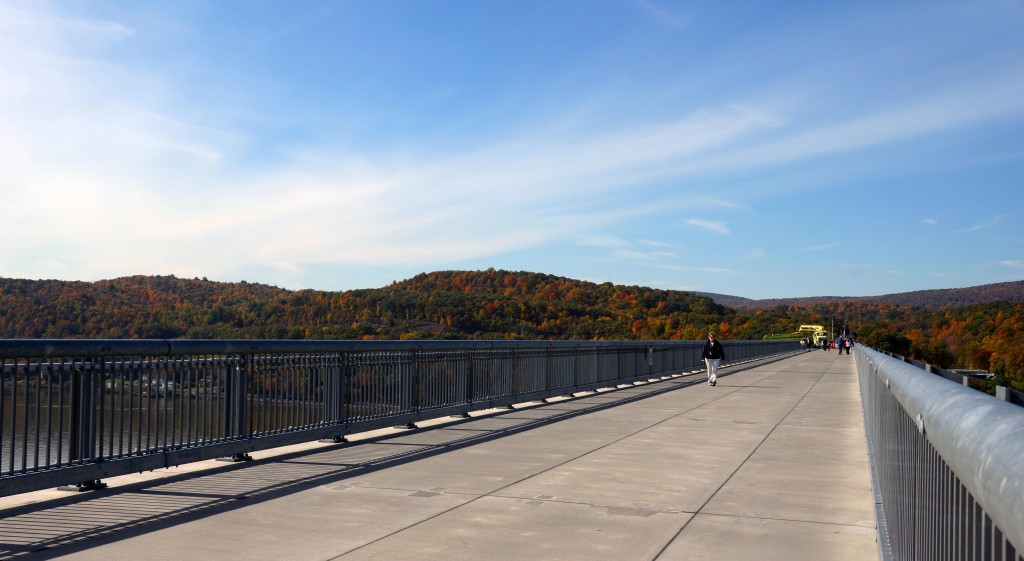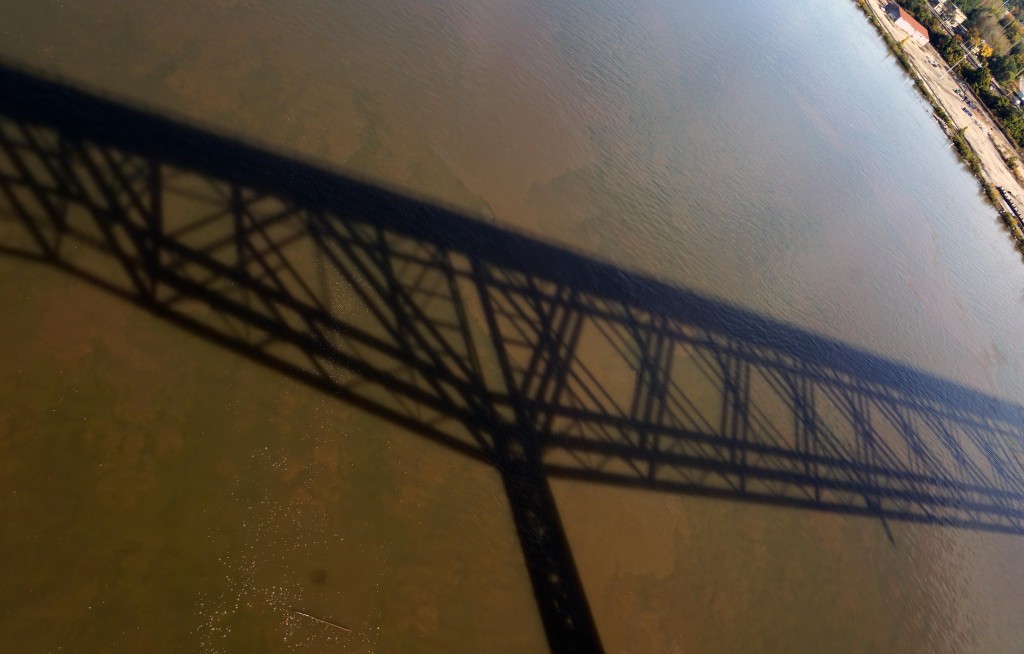The Poughkeepsie Railroad Bridge opened in 1889 and provided the Pennsylvania Railroad with an all-important route to New England, not only for coal but also for pork from the Ohio River Valley and beef from the Southwest. It was designed to compete with Cornelius Vanderbilt’s New York Central Railroad, which controlled the Hudson River line that ran from New York City up to Albany, Buffalo and into the Midwest. The bridge carried passengers as well as freight, including troops headed overseas during World War II; employees and animals of the Barnum & Bailey Circus; and West Point cadets on their way to Army-Yale football games in New Haven.
When the bridge opened it was considered a technological marvel, and was the longest bridge in the world. Once the trains stopped running in 1974 it fell into a long period of disuse. Plans for the Walkway Over the Hudson began as early as 1992, but it would take until 2009 for a linear pedestrian park to open to the public. That occurred on October 3, just a few months after the High Line opened in Manhattan.
Walkway Over the Hudson is the world’s longest pedestrian bridge — it runs for 6,768 feet, about 1.28 miles — and offers stunning views of the Hudson River and Catskill mountains. The steel infrastructure is particularly handsome, though you have to crane your neck over the edge (and 212 feet above the Hudson) to properly appreciate it. Or, if the light is right, you can gaze admiringly at the shadow it casts on the Hudson River below. I agree with Roberta Klara, a writer and railroad historian who told a reporter from the Times that “Views notwithstanding, there’s a kind of industrial lyricism to the bridge’s trusses, rivets and crossbars. Even as a ruin, it’s a thing of great beauty.”
Unlike the High Line there are no tracks, plants, or special gardens here, but the view is remarkable and invigorating, and the bridge’s story is irresistible. Carleton Mabee wrote a fascinating book called Bridging the Hudson: The Poughkeepsie Railroad Bridge and Its Connecting Rail Lines. On the cover he calls it “A Many-Faceted History,” and it truly is. My advice: buy the book, catch one of Vanderbilt’s successors on Metro-North and ride the rails to Poughkeepsie, reading as you go. Sit on the west side side of the train, and you’ll get one of the most beautiful train rides of your life. Then take your walk across the Hudson.
Learn more about the Walkway Over the Hudson on the official website.
Read more about Urban Greenway projects on LivinTheHighLine.com.
[Gallery=17]










